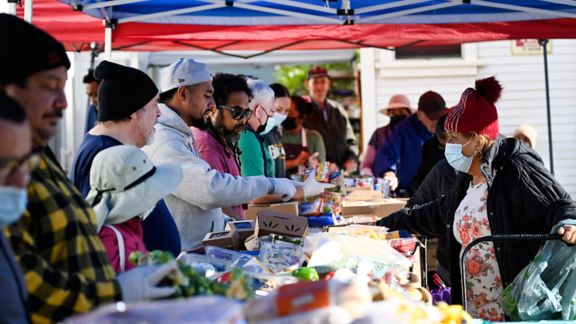Survey of Today’s Adolescent Relationships & Transitions

Problem
HIV rates for young men, particularly Black and Latino youth, are disproportionately high.
The gay community and society at large recognized that education and prevention methods could stop the transmission of HIV, but less was understood about the HIV knowledge and attitudes of adolescents, especially minority youth. Stigma, homophobia, and discrimination can make men who have sex with men susceptible to physical and mental health problems that interfere with their ability to receive HIV prevention services, testing, and treatment.
Solution
NORC developed an innovative social media-based survey of adolescent sexual behavior.
Our work with the Division of Adolescent and School Health (DASH) at the Centers for Disease Control and Prevention (CDC) began with the creation of the Survey of Today’s Adolescent Relationships and Transitions (START). We used social media (e.g., Facebook, Snapchat, Instagram) to reach them, and our questions covered:
- Behavior and attractions
- Access to sex education and other HIV prevention activities
- Knowledge and behavior related to HIV prevention methods
- Parental involvement
In addition, our partners at The Fenway Institute conducted online and in-person focus groups with professionals who work with these youths.
Result
The survey identified critical gaps in HIV prevention care for youth.
For this project, NORC conducted a thorough analysis of the survey responses of over 3,100 people, together with qualitative data collected from adult and youth focus groups.
Our analysis informed appropriate HIV prevention tools for adolescents.
The surveys and focus groups pointed to the need to offer tools that are free, easy to access, and provided by trained professionals to assist youth in accessing HIV prevention and testing resources. Using those findings, we and our partners—The Fenway Institute and DASH—developed appropriate, effective HIV prevention materials to help combat the high rate of this dangerous infection. Researchers also used the data to produce journal articles and conference presentations to inform HIV prevention efforts. The prevention tools that NORC helped create included:
- Webinars for health care providers and school-based professionals
- A self-assessment tool for schools
- A survey module on parental and school connectedness
The survey also confirmed that innovative web technologies, such as social media ads, can efficiently recruit the target audience in a scientifically rigorous way. In a subsequent project, NORC used this data to help develop prevention tools to support the population of youth and providers.
Related Tags
Project Leads
-
Stuart Michaels
Senior Research ScientistProject Director -
Larry L. Bye
Senior FellowSenior Staff -
Sabrina Avripas
Principal Research DirectorSenior Staff -
Melissa Heim Viox
Senior Research DirectorSenior Staff











